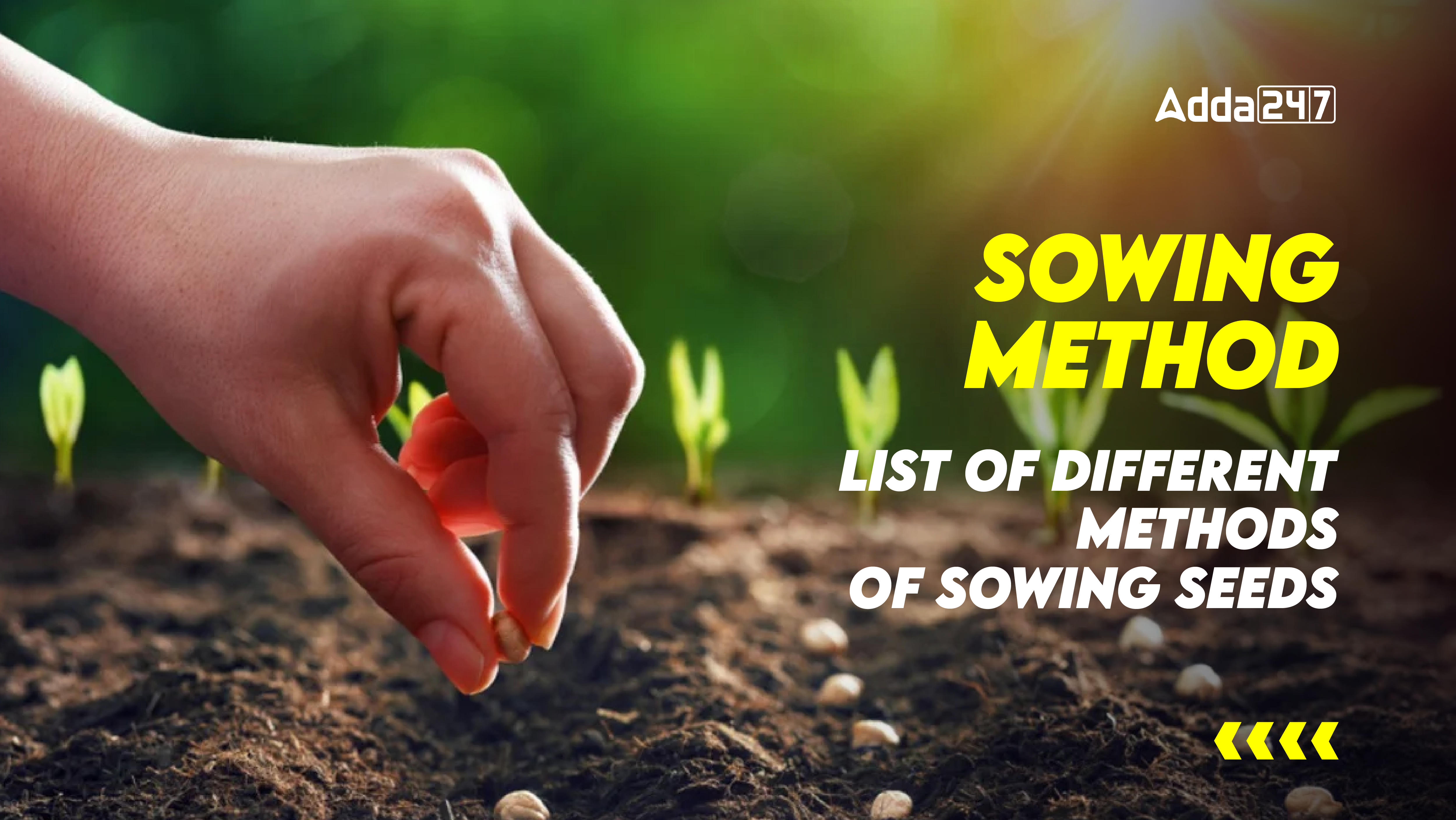Hello from the world of planting! Let’s start with the basics: seeding is the first step in plant growth. How you plant your seeds is crucial, whether you’re cultivating a large field of crops or just a few flowers in your garden. There are various methods, each with its advantages. Let’s explore the different techniques farmers use to sow seeds and nurture them into strong, healthy plants! For more details, check out the article on the various sowing methods.
What is Sowing?
Sowing involves planting seeds in the ground to cultivate plants or crops, serving as the initial step in farming. When we sow, we place seeds in soil or another growing medium and create the right conditions for growth. It’s essential to follow safety measures, such as maintaining the proper depth and spacing, and ensuring the soil is free from diseases and harmful organisms like fungi.
For example, furrows are used to plant sugarcane, ladyfingers are sown along ridges, and leafy vegetables thrive in beds.
Different Methods of Sowing
Seeds can be planted directly in the ground or through transplanting. In the transplanting method, seedlings are first grown in a nursery and then moved to the field once they’re established. Here are some common sowing techniques:
- Broadcasting
- Dibbling
- Sowing behind the country plough (manual and mechanical drilling)
- Seed drilling
- Nursery transplanting
Let’s learn about each method in detail.
Broadcasting
This sowing method involves scattering seeds over large areas, effectively spreading them across a field or garden to cover the entire space. To achieve an optimal plant population per unit area, certain guidelines should be followed. For instance, only a skilled person should broadcast the seeds to ensure uniform distribution, and the ploughed field must be in excellent condition to promote successful germination.
Broadcasting is done using the following steps:
Preparation → Seeding → Covering → Watering
This method is mainly used for sowing grains, grass, and some types of vegetables like carrots and lettuce.
Dibbling
This method involves inserting seeds into holes at a specific depth and then covering them. It can be practiced on flat surfaces, ridges, furrows, beds, and channels. Essentially, it allows each seed to have its own designated spot to grow, promoting better spacing and optimal conditions for development.
Dibbling is done using the following steps:
Preparation → Dibbling → Planting → Covering → Watering
This method is mainly used for small seeds like carrots, radishes, and onions, as well as for transplanting seedlings into the garden.
Sowing behind the plough
This traditional method carried out manually or with mechanical means, involves dropping seeds into furrows created by a plough. As each furrow is opened, the previous one is closed or covered, ensuring uniform spacing between seeds. While this method promotes consistent sowing distances, the manual approach can be labor-intensive and time-consuming.
Sowing behind the plough is done using the following steps:
Plowing → Sowing → Covering → Additional Cultivation
Seeds like red gram, cowpea, and groundnut are sown behind the country plough. The major sown crop is ground out.
Seed Drilling
In this method, seeds are placed at a specific depth and covered with soil using sowing implements. Seeds are drilled either continuously or at regular intervals in rows. This technique allows for precise control over the depth of sowing and the simultaneous application of fertilizers, ensuring optimal growing conditions for the seeds.
Seed Drilling is done using the following steps:
Preparation → Seed Drill Setup → Planting → Covering → Post-Planting tasks
It requires more time, energy, and cost, but maintains a uniform population per unit area. Seeds are placed at uniform depth, covered, and compacted. Also, there is less risk of soil erosion as seeds are directly planted into the soil.
Nursery transplanting
This method consists of two key components: the nursery and transplanting. In the nursery, young seedlings are nurtured in a controlled environment, such as a greenhouse, allowing for better protection and growth in a smaller area over a short period. Once the seedlings are established, they are transplanted into a field or garden for further development.
Nursery transplanting is done using the following steps:
Seed Germination → Seedling Care → Transplanting → Field Preparation → Transplanting Process → Aftercare.
In this method, seeds are controlled, and efficient production is done to improve crop yields and plant health.



 RSMSSB Agriculture Supervisor Recruitmen...
RSMSSB Agriculture Supervisor Recruitmen...
 IBPS AFO Mains Cut Off 2025 Out, Check C...
IBPS AFO Mains Cut Off 2025 Out, Check C...
 IBPS RRB Agriculture Officer Exam Date 2...
IBPS RRB Agriculture Officer Exam Date 2...




 Adda247 Job portal has complete information about all Sarkari Jobs and Naukri Alerts, its latest recruitment notifications, from all state and national level jobs and their updates.
Adda247 Job portal has complete information about all Sarkari Jobs and Naukri Alerts, its latest recruitment notifications, from all state and national level jobs and their updates.



